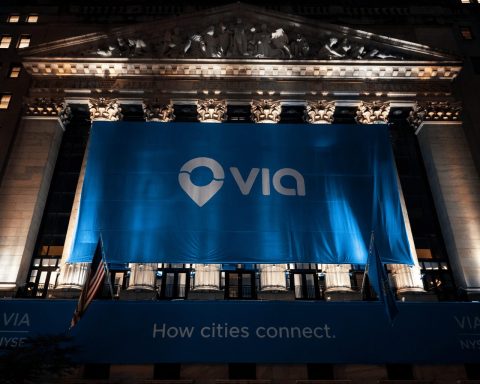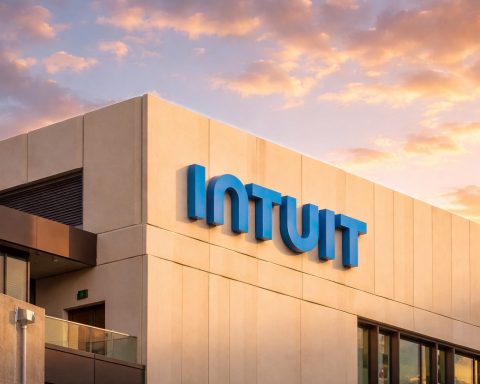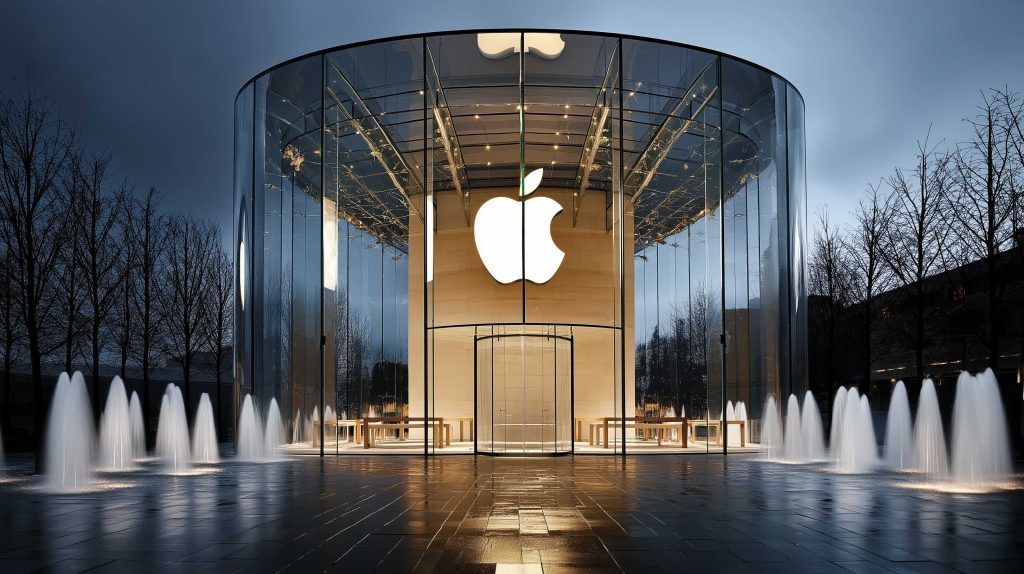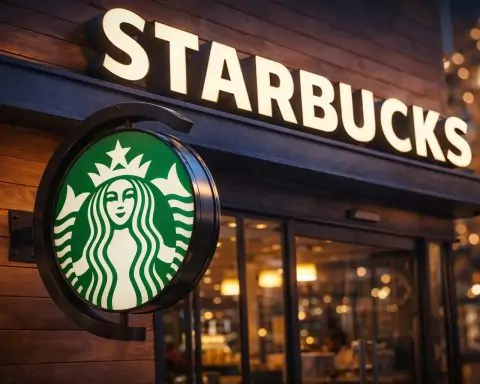- By 2025, about 69–70% of New Zealanders have fiber-optic internet at home.
- The Ultra-Fast Broadband (UFB) program had reached 87% of the population by the end of 2022.
- By mid-2023, fiber uptake reached 73% of premises passed, with fiber lines accounting for about 70% of fixed broadband connections.
- Spark, One NZ (formerly Vodafone NZ), and 2degrees collectively serve roughly 73% of the broadband market on the open-access UFB fiber network.
- Standard residential fiber plans offer 100 Mbps to 1 Gbps, Hyperfibre reaches 2–8 Gbps in some areas, and about 30% of new fiber subscribers choose gigabit speeds.
- 4G mobile coverage covers about 98–99% of the population; as of mid-2024, 5G was live in 100+ locations with a target to reach all towns over 1,500 people by 2026.
- RBI created dozens of new 4G/5G towers; Budget 2022 added NZ$60 million to extend RBI to about 30,000 more rural households.
- Starlink launched in early 2021; by Q2 2023 median download was 148 Mbps, typical 50–200 Mbps, and latency 20–50 ms; about 12,000 satellite users by mid-2023 (roughly 5% of rural connections).
- Starlink costs NZ$159 per month with NZ$650 upfront hardware; GEO satellite options from Farmside and Gravity offer lower-speed, higher-latency plans.
- The Remote Users Scheme (RUS) offers up to NZ$2,000 one-off subsidies to around 7,500 connections, totaling about NZ$15 million.
Overview of New Zealand’s Internet Landscape (2025)
New Zealand has transformed its internet infrastructure dramatically over the past decade. Today, even in far-flung rural areas – from high-country farms to coastal villages – many users enjoy broadband speeds that rival or surpass those in the cities. This dramatic improvement comes from a combination of nationwide fiber deployment, upgraded mobile networks, and the advent of low-earth orbit satellites. In 2025, roughly 69–70% of New Zealanders have fiber-optic internet connections at home, a big jump from just a few years ago [1]. At the same time, new wireless and satellite technologies are bridging the digital divide for the remaining remote communities. This report examines all major types of internet access in New Zealand – fixed broadband (copper and cable), ultra-fast fiber, mobile data (including fixed wireless), and satellite internet – covering key providers, typical speeds, coverage areas, pricing, and infrastructure. It also highlights government initiatives, regional disparities between urban and rural connectivity, and current trends in adoption and affordability.
Fixed Broadband: DSL and Cable Connections
Traditional fixed-line broadband in New Zealand has historically relied on copper telephone lines (DSL/VDSL) and, in a few areas, coaxial cable TV networks. DSL (Digital Subscriber Line) internet is delivered over the old copper phone network and is still available nationwide. However, its performance depends on distance from telephone exchanges or cabinets – speeds can range from about 1 Mbps up to ~100 Mbps in the best VDSL2 scenarios, but many rural DSL users see only single-digit Mbps speeds. In fact, the Commerce Commission noted that a basic rural copper connection averages around 9 Mbps – painfully slow compared to modern standards. Despite these limitations, copper broadband had been a lifeline for rural areas not reached by newer networks. By 2023, though, copper’s dominance even in rural NZ was waning: traditional copper lines fell below 50% of all rural connections, as users migrated to wireless and other options.
Cable broadband (HFC – Hybrid Fiber Coaxial) is less common, limited to certain suburbs in Wellington and Christchurch. This network, formerly run by TelstraClear and now by One New Zealand (formerly Vodafone NZ), uses coax TV cables to deliver internet via DOCSIS technology. Cable broadband can offer speeds comparable to entry-level fiber in areas where available – up to hundreds of Mbps (Vodafone’s “FibreX” cable service advertises ~900 Mbps download in ideal conditions). However, coverage is patchy and mainly urban/suburban. Outside those pockets, cable is usually not an option for rural users. Overall, traditional fixed broadband options (DSL and cable) are increasingly viewed as interim solutions – many New Zealanders have been transitioning off these legacy networks as fiber and wireless alternatives expand.
Pricing: Notably, the cost of a copper or cable broadband plan in rural NZ is often no cheaper than a far superior fiber plan in the city. The Telecom Commissioner highlighted in 2023 that a rural customer might pay about the same for a 9 Mbps copper line as an urban customer pays for a 300 Mbps fiber connection. Monthly prices for basic unlimited DSL plans typically range around NZ$60–$90, similar to fiber broadband pricing. Cable plans in Wellington/Christchurch have been marketed on par with fiber plans as well (around NZ$80–$100 for high-speed tiers). This pricing parity, unfortunately, means rural users have often paid city prices for subpar speeds – a key driver behind migration to newer technologies as they become available.
Ultra-Fast Fiber Broadband Revolution
New Zealand’s flagship Ultra-Fast Broadband (UFB) initiative has been a game changer in connectivity. The UFB program, backed by government and private investment, rolled out fiber-optic cables across cities and towns, reaching approximately 87% of the population by the end of 2022. Multiple local fiber companies (Chorus, Enable, Northpower, and Tuatahi/Ultrafast Fibre) built out networks under this program. The result is that most Kiwis in urban and many rural towns now have access to gigabit-capable fiber right to their homes and businesses.
Fiber offers by far the fastest and most reliable internet service. Standard residential fiber plans come with download speeds of 100 Mbps up to 1 Gbps, with premium offerings (“Hyperfibre”) even reaching 2–8 Gbps in some areas. Latency on fiber is extremely low (often 1–5 ms), and unlike older technologies, fiber links are typically symmetrical or offer high upload speeds (crucial for cloud applications, uploading data, and two-way video). The most popular plans for new fiber customers in 2023 were around 300 Mbps download (often with ~100 Mbps upload), though uptake of gigabit “Fibre Max” plans has been growing rapidly. In fact, about 30% of new fiber subscribers are opting for gigabit speeds, which cost under NZ$100 per month. This underscores how affordable high-speed fiber has become in NZ – prices are modest by international standards, and many retail ISPs often run deals around NZ$60–$80 per month for unlimited 300 Mbps or even gigabit plans.
Coverage and Providers: Fiber is now available not just in big cities like Auckland, Wellington, and Christchurch, but also in smaller regional centers and towns (thanks to UFB phase 2 extending coverage deeper into provincial areas). As of mid-2023, fiber uptake reached 73% of all premises passed – meaning nearly three quarters of households who could get fiber have already connected. Nationwide, fiber lines accounted for about 70% of all fixed broadband connections in 2023, overtaking older technologies as the primary way Kiwis get online. The retail market for fiber is dominated by a few large ISPs: Spark (the largest broadband provider), One New Zealand (formerly Vodafone NZ), and 2degrees (which merged with Orcon/Slingshot). These three collectively serve roughly 73% of the broadband market. Other notable providers include Vocus (Slingshot/Orcon brands, now under 2degrees), Sky Broadband (offered by the pay-TV company), and smaller regional ISPs (e.g. Now in Hawke’s Bay, Inspire Net in Manawatū). All retail ISPs essentially leverage the same open-access fiber networks, so competition is mainly on price and service rather than infrastructure. With fiber widely available, urban New Zealand enjoys world-class connectivity – in fact NZ now ranks among the top OECD countries for fiber penetration (over 70% of broadband subscriptions are full fiber).
Mobile Data and Wireless Broadband
New Zealand’s mobile networks provide a crucial internet access platform, especially for those outside the fiber footprint or on the move. The country has three main mobile operators – Spark, One New Zealand (formerly Vodafone), and 2degrees – all of which offer 4G LTE coverage to the vast majority of the population. In 2023, 4G population coverage was effectively around 98-99%, meaning virtually every town and community can get a mobile signal. These operators have also been rolling out 5G in urban centers and larger towns: as of mid-2024, Spark’s 5G network spanned 100+ locations and there are plans to extend 5G to all towns over 1,500 people by 2026. While geographically New Zealand’s rugged terrain means only ~60% of the land area has mobile coverage, the populated areas are well served.
Mobile data speeds have improved significantly with 4G and now 5G. According to Opensignal measurements, the average overall mobile download speed in NZ (across all technologies) is about 33–43 Mbps, with One NZ users seeing ~42.6 Mbps on average (the fastest of the carriers) [2]. When connected to 5G, users can experience much higher speeds – in early 2023, average 5G downloads were recorded above 220–270 Mbps on 2degrees and One NZ networks. In ideal conditions, 5G peaks can reach into the gigabit range, though typical real-world speeds are in the hundreds of Mbps. Upload speeds on 4G/5G are generally lower but improving (5G uploads around 20–30 Mbps). Latency on 4G is usually 30–60 ms, and 5G can bring that down below 20 ms in some cases.
For rural homes and businesses, fixed wireless broadband (FWB) has become a popular solution. Fixed wireless uses the mobile networks to deliver broadband to a home router (often with an external antenna). Under the Rural Broadband Initiative (RBI), dozens of new cell towers were built in sparsely populated areas specifically to serve wireless broadband to farms and settlements. RBI wireless plans usually use 4G LTE and can offer speeds from about 10 Mbps up to 50+ Mbps depending on signal quality. The advantage is quick deployment and coverage where running fiber is uneconomical. All three mobile operators provide rural wireless broadband packages, sometimes in partnership with specialist rural ISP brands. For instance, Farmside (a rural ISP acquired by Vodafone/One NZ) offers wireless broadband plans alongside its satellite services. Prices for fixed wireless broadband are comparable to entry-level wired plans – often around NZ$85–$100 per month for a plan with a generous data cap (e.g. 300 GB) or unlimited off-peak data. However, one ongoing issue is that many rural wireless plans still impose data caps, unlike urban fiber plans which are almost all unlimited. This means rural users on LTE broadband must keep an eye on usage or face slowed speeds, a frustration that urban users rarely have in 2025.
5G and Future Wireless: The expansion of 5G into more regions is expected to boost wireless broadband speeds further and increase capacity. All three carriers plan to shut down 3G networks by 2025 to refarm spectrum for 4G/5G, improving rural coverage and performance. Additionally, New Zealand is exploring innovative solutions to reach the last coverage blackspots. One groundbreaking development is satellite-to-mobile service: in 2023 One New Zealand partnered with SpaceX’s Starlink to enable direct-to-cellphone satellite connectivity in remote areas. Once operational (anticipated by 2024–25), this means a regular mobile phone could stay connected via satellite even far outside normal tower range – effectively promising 100% geographic coverage of NZ for basic messaging and calling. While it won’t deliver high-bandwidth data for streaming, this hybrid satellite-cell service will eliminate dead zones for essential connectivity, greatly benefiting rural communities, hikers, boaties, and motorists on remote roads.
Satellite Internet Takes Off in NZ
Perhaps the most stunning recent development in New Zealand internet access is the rise of satellite broadband for consumers. In early 2021, SpaceX’s Starlink low-earth orbit (LEO) satellite service became available in NZ. In the short time since, Starlink has amassed thousands of users and proven to be a game changer for remote connectivity. Unlike older satellite options, Starlink uses a large constellation of LEO satellites to provide high-speed, low-latency internet virtually anywhere in the country with a clear view of the sky. This means rural customers – from hill country farms to the Chatham Islands – can now get broadband that in many cases beats ADSL or even rivals fiber performance.
Speeds and Performance: Starlink delivers typical download speeds in the 50–200 Mbps range (and sometimes higher) with upload speeds around 10–20 Mbps. During Q2 2023, Starlink users in NZ saw a median download speed of about 148 Mbps, which was actually faster than the median for all fixed broadband providers (around 114 Mbps). Latency on Starlink is around 20–50 ms – a huge improvement over traditional geostationary satellites, which often had 600+ ms delay. This low latency makes real-time applications (Zoom calls, online gaming, etc.) feasible over satellite for the first time. As a result, Starlink has achieved extraordinarily high user satisfaction in NZ – surveys show its customers report significantly better experience than users on other rural broadband solutions. By mid-2023, satellite connections in NZ jumped from about 1,900 to 12,000 within a year. These ~12,000 satellite broadband users accounted for roughly 5% of all rural connections, giving NZ one of the highest per-capita satellite uptake rates in the OECD. The rapid uptake of Starlink highlights a strong latent demand in rural communities for quality internet similar to urban fiber.
Other Satellite Providers: While Starlink dominates headlines, it’s not the only player. Long before Starlink, companies like Farmside (now part of One NZ) and Gravity Internet have offered satellite broadband via geostationary satellites. Services such as HughesNet (through local partners) have also been available in NZ for years. These traditional satellite plans use a single satellite parked above the equator. They offer much smaller data caps and higher latency (typically 600 ms+), so they’re considered a last resort where nothing else is available. For example, Farmside’s legacy satellite plans cost around NZ$99 per month for just 10 GB of data, or NZ$125 for 40 GB. Another provider, Gravity, offers a somewhat more generous geostationary plan with unlimited data at ~40 Mbps down / 10 Mbps up for NZ$129 per month (but with a hefty ~$495 install fee). These options helped connect remote farms and bach owners over the past two decades, albeit with very basic service. Now, with Starlink’s arrival, rural users can get uncapped, 100+ Mbps for the first time via satellite – a quantum leap. Starlink’s standard residential service in NZ is priced at NZ$159 per month, with a one-time hardware cost of roughly NZ$650 for the dish and Wi-Fi router [3]. That monthly fee is steep compared to fiber (2–3 times the cost of a fiber or fixed wireless plan), yet many are willing to pay for the performance it delivers. Recognizing the cost barrier, some regional programs and communities have begun subsidizing Starlink for those who need it (more on this below).
Coverage and Uses: Satellite internet covers virtually all of New Zealand – all you need is power and a clear view of the sky. This has been lifesaving in disaster scenarios. During Cyclone Gabrielle in 2023, for example, parts of Hawke’s Bay and Tairāwhiti lost terrestrial communications for days. Starlink units were quickly deployed to reconnect isolated towns like Wairoa, restoring emergency communications and community connectivity when landlines and cell networks were down. Similarly, in everyday life, remote users from Stewart Island to the far North can now participate in Zoom meetings, access cloud services, or stream HD video thanks to satellite broadband. The farming sector has benefited hugely – “Connected farms” can use digital tools, IoT sensors, and cloud platforms that were impractical on old dial-up or patchy DSL. The irony is not lost that some remote farms now genuinely have faster internet than city dwellers stuck on old copper lines or congested networks!
Looking ahead, the satellite internet scene may get even more competitive. OneWeb, another LEO satellite constellation, has begun operations in parts of the world and could expand service in Oceania through local telecom providers. And Amazon’s Project Kuiper is on the horizon, with satellites set to launch – potentially offering broadband service in NZ in the coming years. For now, Starlink remains the primary satellite choice for consumers, while legacy satellite services serve as a backup or niche solution.
Government Initiatives and Policies Impacting Connectivity
The New Zealand government has played a pivotal role in improving internet access through a series of initiatives and policies:
- Ultra-Fast Broadband (UFB) Initiative: Launched in 2009, the UFB program is a public-private effort that invested in fiber-optic infrastructure for urban and suburban areas. By providing open-access fiber networks to retail ISPs, UFB drove competition and affordable pricing. The government (via Crown Infrastructure Partners) subsidized the rollout to ensure even smaller towns got coverage. UFB was completed by 2022, reaching 87% of the population. As noted, uptake is high (over 70% of those able to connect have done so), and UFB is credited with New Zealand’s leap into the global top tier for broadband.
- Rural Broadband Initiative (RBI) and Extensions: Running in parallel to UFB, the RBI program (phases 1 and 2) targeted the remaining 13% of the population outside the fiber footprint. RBI1 (early 2010s) upgraded rural phone cabinets for ADSL2+ and built dozens of new 3G/4G cell towers in rural areas. RBI2 (late 2010s into 2020s) further expanded rural wireless coverage (4G) and funded more towers, often in partnership with regional Wireless ISPs. The Mobile Black Spot Fund (MBSF) also invested in bringing mobile coverage to remote highways, tourist spots, and marae, improving safety and access. In Budget 2022, an additional NZ$60 million was allocated to boost rural connectivity – including extending RBI coverage to another 30,000 rural households that were still underserved.
- Remote Users Scheme (RUS): Acknowledging that some of the most isolated premises would never be reached even by RBI cell towers, the government launched the Remote Users Scheme in late 2022. Under RUS, eligible rural residents who cannot get a decent broadband connection (defined as 10 Mbps or better) can apply for a one-off grant up to NZ$2,000 to help cover the setup of an alternative solution. In practice, this subsidy can pay for the hardware and installation of a satellite service like Starlink. The scheme is aimed at farms, homesteads and Māori community dwellings in the absolute backblocks. Approximately NZ$15 million was earmarked for RUS, enough to subsidize about 7,500 connections. This was a clear sign that the government views LEO satellite internet as a viable solution for the last few percent of users. By lowering the upfront cost barrier, RUS has been welcomed by rural advocates, though there are calls for further support since ongoing satellite subscription fees remain high.
- Telecommunications Development Levy (TDL): This is an industry levy collected from telcos each year (around NZ$10 million annually in recent years) that funds rural network improvements. Essentially, urban telco revenues are tapped to subsidize rural infrastructure – Spark and Vodafone/One NZ, as the largest operators, contribute the most [4]. The TDL has funded some RBI projects, Marae digital connectivity, and upgrades to maintain rural copper lines where needed.
- Regulatory Updates: The Commerce Commission, which regulates telecoms, has shown increasing interest in rural service quality. In 2023 it launched an investigation into rural broadband services after complaints of sub-standard performance. This regulatory pressure comes as a relief to rural users who have felt left behind. Additionally, spectrum policy has been aligned with coverage goals – for 5G in 2022, the government offered 3.5 GHz spectrum rights directly to operators in exchange for commitments to expand rural coverage (rather than a highest-bidder auction). This policy ensures that new technology benefits are not confined to cities alone.
- Digital Inclusion Initiatives: Beyond infrastructure, there are programs to improve affordability and digital skills. For example, the government’s Digital Strategy for Aotearoa emphasizes everyone having access to the internet and the ability to use it. Non-profits and community groups, with some government support, run schemes like subsidized broadband for low-income families (e.g. Skinny’s Jump program) and device lending schemes. While these are smaller-scale efforts, they acknowledge that connectivity is now an essential service like electricity – critical for education, health, and economic opportunity.
In summary, government policy in NZ has moved from building networks (UFB, RBI) to now filling the gaps and ensuring fair access. The combined impact of these initiatives is evident in the statistics: by 2025, virtually every New Zealander who wants internet access can get at least some form of broadband, though the quality and cost still vary.
Urban vs. Rural: Bridging the Digital Divide
New Zealand’s geography and settlement patterns have long posed a challenge for equitable internet access. The urban-rural digital divide has been a focal point for improvement, and while it’s narrowing, disparities persist:
- Speed and Service Quality: Urban residents in 2025 mostly enjoy fiber connections of 100 Mbps to 1 Gbps with unlimited data. By contrast, many rural residents (especially those outside larger towns) rely on wireless or older DSL links. The Commerce Commission highlighted that outside the fiber footprint, broadband is generally slower and more expensive. We saw that a rural copper user averaging 9 Mbps pays roughly the same as a city fiber user at 300 Mbps. Moreover, data caps are a nuisance mostly found in rural plans – nearly all urban fixed-line plans are uncapped in 2025. Until recently, it was common for rural wireless packages to limit users to, say, 120 GB per month, whereas an urban user streaming Netflix freely never thinks about data limits. This gap in user experience is gradually closing as rural wireless plans increase caps and as more rural users adopt Starlink (which currently has no hard data caps on standard plans).
- Coverage Gaps: Thanks to RBI, the number of rural households with absolutely no broadband option has shrunk. Some extremely remote spots that lacked even cellular coverage are now targeted by the Remote Users Scheme or the upcoming satellite-to-cell service. Still, there is a divide in mobile coverage: approximately 60% of NZ’s land area (mostly high country, deep bush, and far-flung coastal zones) remains without cell reception. While that sounds high, those areas are sparsely inhabited – farmers and trampers know where the dead zones are. The One NZ–Starlink partnership aims to eliminate these blackspots for basic connectivity, which will be a huge boon for safety and convenience in rural life.
- Rural Fiber and Alternative Solutions: Not all rural areas are disconnected. Many small towns and semi-rural settlements did get fiber or upgraded VDSL cabinets via UFB and other programs. For example, towns with a few thousand people often have fiber down the main street now. Some rural schools and health centers also received direct fiber links through government programs. Additionally, community-led initiatives and local wireless ISPs (WISPs) have played a part. In regions like the Waikato and Canterbury Plains, WISPs set up microwave links or private LTE to cover farms, years before RBI filled in. These stopgap measures helped, but they often were limited by funding and scale. As of 2025, satellite internet stands out as a key equalizer. A farmer on a remote station can get 100 Mbps via Starlink – something unthinkable a few years ago – meaning they can access cloud software, online banking, e-commerce, e-learning for their kids, telehealth consultations, and all the digital services urban people take for granted. The “digital isolation” of rural life is lessening.
- Affordability and Economic Divide: One remaining challenge is that even if service is available, some rural users struggle with cost. As noted, Starlink’s $159/mo may be out of reach for average families on tight budgets. Low-income households in both rural and urban areas might opt to rely solely on mobile phone data (which can be cheaper upfront than maintaining a home broadband plan) – but mobile plans typically have limitations for heavy use. The government subsidies like RUS (for remote installs) and non-profit programs (like discounted broadband for families with schoolchildren) are aimed at this issue. The InternetNZ 2023 survey found that while a majority have home internet, there are still segments (especially the elderly and low-income) more likely to be using slower wireless connections or no connection at all. Digital literacy can also be lower in rural and disadvantaged groups, which can indirectly limit uptake even where infrastructure exists.
Encouragingly, the “latent demand” for better rural internet has been proven – once a viable service is offered, uptake is strong. The success of fiber in towns and Starlink on farms shows that rural Kiwis are eager to connect when given the opportunity. Policymakers now increasingly view rural connectivity not just as a technology issue but as a matter of equity – ensuring all citizens can participate in the digital society, whether it’s for running a business from a lifestyle block or simply streaming video at the bach.
Internet Access Trends and Challenges in 2025
The current trends in New Zealand’s internet landscape point towards ever faster and more accessible connectivity, but also highlight some ongoing challenges:
- Fiber is King (and Still Expanding): Fiber broadband is now the default fixed connection in most of NZ. With ~70% of broadband subscribers on fiber, legacy DSL is rapidly being phased out. Chorus (the main fiber infrastructure company) announced new expansion projects in 2024 to extend fiber to another 10,000 homes in about 59 smaller communities, beyond the original UFB footprint. There is a clear trajectory to continue pushing fiber deeper, perhaps eventually to 90%+ of the population. The focus for fiber now is also on upgrading capacity – e.g. deploying 25 Gbps passive optical network tech in backbone links, and offering multi-gigabit retail plans (Hyperfibre). These ensure the fiber network can handle growing data demand for years to come.
- Fixed Wireless and 5G Growth: On the mobile side, while 4G remains the workhorse (and will still carry the bulk of mobile data through the decade), 5G adoption is rising. By 2029, it’s estimated about 46% of mobile subscriptions will be 5G. Mobile data usage per user is climbing – from around 7.6 GB per month in 2024 to a projected 13.7 GB by 2029 – thanks to video streaming and unlimited data offers. The mobile market is fairly saturated in subscriber numbers, but revenue is nudging up as people pay for bigger data plans and new services. A noteworthy trend is the closure of 3G networks by 2025 to free up more spectrum for 4G/5G, which will improve rural capacity. Also, all three mobile operators have started network sharing for rural cell sites to cost-effectively cover more ground (for instance, Vodafone and Spark often co-locate on RBI towers). The challenge ahead is ensuring backhaul to rural towers is sufficient (fiber backhaul or high-capacity microwave) so that rural wireless users can get decent speeds and not be left with congested service.
- Satellite Uptake and Competition: The surge of Starlink in NZ suggests satellite broadband will remain a key part of the mix. By 2025, it would not be surprising if subscriber numbers doubled again from the 12,000 seen in 2023, given continued demand. Starlink’s early success has also prompted discussions around regulation – major telcos have noted that Starlink operates largely outside NZ’s telecommunications regulatory framework and cost obligations (like the TDL levy), paying only minimal spectrum fees. There may be moves to ensure a more level playing field if satellite services take a significant share of the market. For consumers, a challenge will be if Starlink were to become oversubscribed – so far performance is excellent, but in some countries heavy sign-ups have caused speeds to dip. NZ’s relatively low population means this is less of an issue, but it’s something to watch (as an interest.co.nz analysis put it, “Starlink is wildly successful, but congestion could be the catch”). The potential entry of new LEO constellations later in the decade could provide alternatives and possibly drive down prices through competition.
- Affordability and Inclusivity: Even with good infrastructure, not everyone is online. New Zealand’s internet penetration is high (around 93–95% of households have some form of internet), but that last 5% represents tens of thousands of mostly low-income or remote households. Efforts like Skinny Jump (providing basic broadband for ~$5 a month to qualifying families) and public library internet stations will need to continue, so that poverty does not become a barrier to connectivity. Additionally, ensuring that Māori and Pasifika communities, which are disproportionately represented in low-connectivity statistics, have access and support is a focus (for example, recent Marae connectivity initiatives and digital upskilling programs funded by the government and tech companies).
- Resilience: Events like the Christchurch earthquakes and more recently Cyclone Gabrielle have taught NZ the importance of network resilience. Telecom companies and government agencies are investing in backup power for cell sites, satellite backup links for critical infrastructure, and diversification of international cables. By 2025, NZ will have additional submarine fiber cables (the new Southern Cross NEXT cable went live in 2022), increasing capacity and redundancy for international internet traffic. On the local front, expect more generators at rural towers and wider use of satellite phones or internet in Civil Defence emergency packs. The goal is to avoid scenarios where a region is cut off entirely – something Starlink has already helped address in emergencies.
In conclusion, New Zealand’s internet access landscape in 2025 is one of remarkable progress with some ongoing hurdles. A decade ago, the idea that a remote farm in the Southern Alps could stream high-def video or run cloud analytics would sound far-fetched – today it’s reality, and sometimes that farm’s connection is faster than an urban dweller still on an old plan. The combination of nationwide fiber, cutting-edge wireless, and satellite innovations has put NZ at the forefront of connectivity. The continuing challenge will be to make these technologies affordable and accessible to all New Zealanders. If successful, the country can truly claim to have bridged the digital divide, ensuring that whether you’re in downtown Auckland or a remote Fiordland valley, you can be part of the online world at comparable speed and quality. New Zealand’s experience shows how a mix of smart policy, infrastructure investment, and new technology can connect a nation – even one with as many sheep paddocks and distant islands as Aotearoa – to a world of digital opportunity.
Sources
- Commerce Commission New Zealand – Annual Telecommunications Monitoring Report 2022 (June 2023)
- Computer Weekly – Fixed and mobile comms in New Zealand show diverse growth trends (Sep 2024)
- Computer Weekly – Starlink tops satellite performance ratings (July 2023)
- InternetNZ – New Zealand’s Internet Insights 2023 (Survey Report) [5]
- MoneyHub NZ – Starlink Review – Definitive New Zealand Guide (Oct 2023)
- MobileSystems NZ – Best Rural Internet Options in New Zealand 2025
- OpenSignal – Mobile Network Experience Report – New Zealand (Apr 2023) [6]
- NZ Herald – Govt’s new $2000 broadband installation grant for rural homes – Starlink will be eligible (Dec 2022)
- One NZ / CILT – Starlink and One New Zealand collaboration: The future of connectivity (June 2023)
- Gravity Internet – The Remote Users Scheme Explained (Mar 2023)
References
1. internetnz.nz, 2. www.opensignal.com, 3. www.moneyhub.co.nz, 4. www.nzherald.co.nz, 5. internetnz.nz, 6. www.opensignal.com










